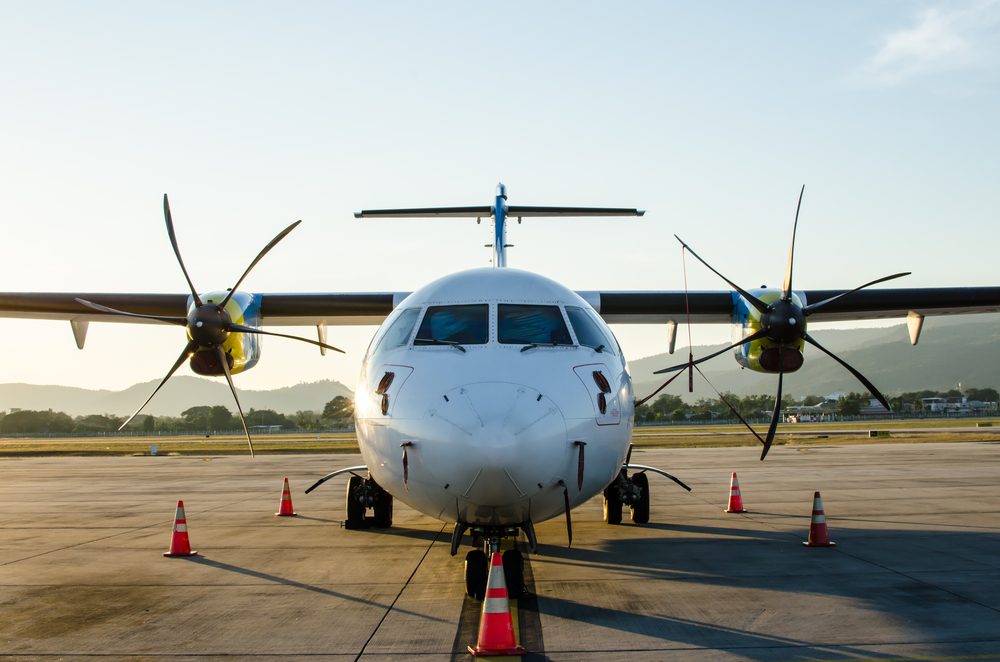Planes that roll off an aerospace manufacturer’s assembly lanes are subject to a bevy of requirements, from FAA certifications to customer paint specifications. Meeting each requirement often requires specialized equipment and knowledge – painting the aircraft is no different. The final finish on an aircraft should not only dazzle the customer that paid a great deal for the plane, but also fulfill quality requirements and thermal needs.
We understand that the aerospace industry is highly regulated and demands superior quality from its equipment providers. With this in mind, we work with aerospace manufacturers to design the spray paint booth with an airflow design that meets finish quality requirements, ensures safety, meets regulatory compliance and minimizes operational costs.
Meet Finish Quality Requirements
To meet certain finish quality, we work with aerospace manufacturers and recommend one of three types of airflow designs: downdraft, semi-downdraft and crossdraft spray booths. Downdraft booths allow the air to move from the ceiling toward the floor, which typically provides the highest quality finish. However, these booths also have the highest installation and operational costs.
The semi-downdraft booth is an alternative to the straight down draft as the supply air enters from the ceiling at the front of the booth, and then turns horizontally towards the exhaust end located on the opposite side of the booth. This airflow design is a slight compromise from a straight down draft airflow design but offers some of the benefits of down draft without the exhaust pit in the floor. Without the pit, this design requires less integration with building and is typically less costly to operate.
The crossdraft design takes advantage of the aerodynamics of the aircraft as the airflow is directed horizontally across the booth and plane, parallel to the floor. This design offers a paint booth that can still meet quality finish standards and at the same time, reduce operating costs as compared to some of the downdraft designs mentioned.
Each booth type is equipped with a heated air supply filtering system that provides particulate-free air to the spray paint booth. This system, called the air makeup unit (AMU), can also be paired with temperature and humidity controls to regulate the air that enters the paint booth. A custom AMU system can be designed to meet specific temperature and humidity conditions required by the paint supplier to provide the optimum final finish.
Ensure Safety and Regulatory Compliance
Exhaust filters are a key component of any spray paint booth airflow design. These filters are located at the discharge (exhaust) end of the booth, where the air is heavy with paint particulates and volatile compounds. When considering a Recirculating Spray Booth, typically, a 3 or 4 stage filter system is used to return the exhaust air back into the spray booth’s air supply plenum, the balance of the air is exhausted to atmosphere. For example, 30 percent of the air is exhausted and replaced by clean, fresh air. The remaining 70 percent is filtered through the 3-stage filter system and then reintroduced into the paint booth. The benefit of this system is a decrease in the need to condition the fresh supply air in the system. For example, a 200,000 cubic feet per minute (CFM) AMU system can be replaced by a 60,000 CFM conditioning system with a properly designed recirculation booth design.
Although this system is more energy-efficient, additional controls will be needed to monitor the lower explosive limit (LEL) and volatile organic compounds (VOC) levels to ensure environmental and regulatory compliance. A recirculating booth is a compromise between operational cost and the need to meet safety regulations.
Minimize Operational Cost
Paint booths can consume large amounts of energy in a manufacturing plant, according to a 2008 Metal Finishing article. Improvements in airflow design can have a great impact on operational cost. Although some methods of energy efficient practices have been discussed previously, there are additional steps that can be taken to reduce costs.
One method of improving airflow design is to match the form of the paint booth to the shape of the painted component. For example, downdraft paint booths can be designed with a conformal shape to mimic the high middle tail section and the lower outer wing sections of fully assembled aircraft. This design reduces the amount of energy required by 15-30 percent for a small to medium-sized aircraft.
Our booth designers can also decrease energy consumption by adjusting the airflow controls with variable frequency drives (VFD) guided by a programmable logic control. This system maintains the air pressure of the booth, adjusting the airflow rate as the static pressure increases across dirty filters. Additional devices, like the VFD and airflow design alterations, can greatly improve the operational cost of spray paint booths.
Designing a spray paint booth to meet aerospace manufacturing needs is much more complex than simply installing a downdraft booth for the highest quality finish possible. While downdraft booths minimize finish imperfections, an airflow design impacts more than just the paint quality. The airflow through the exhaust system must be filtered to meet environmental and safety requirements. Any adjustments to the airflow system, like recirculating 70% of the air, can impact both the cost and safety systems, which is why you need booth experts that care. When you choose Spray Systems, you’re choosing a dedicated team of experts that will work closely with you to ensure the absolute best airflow for your aerospace paint applications.
